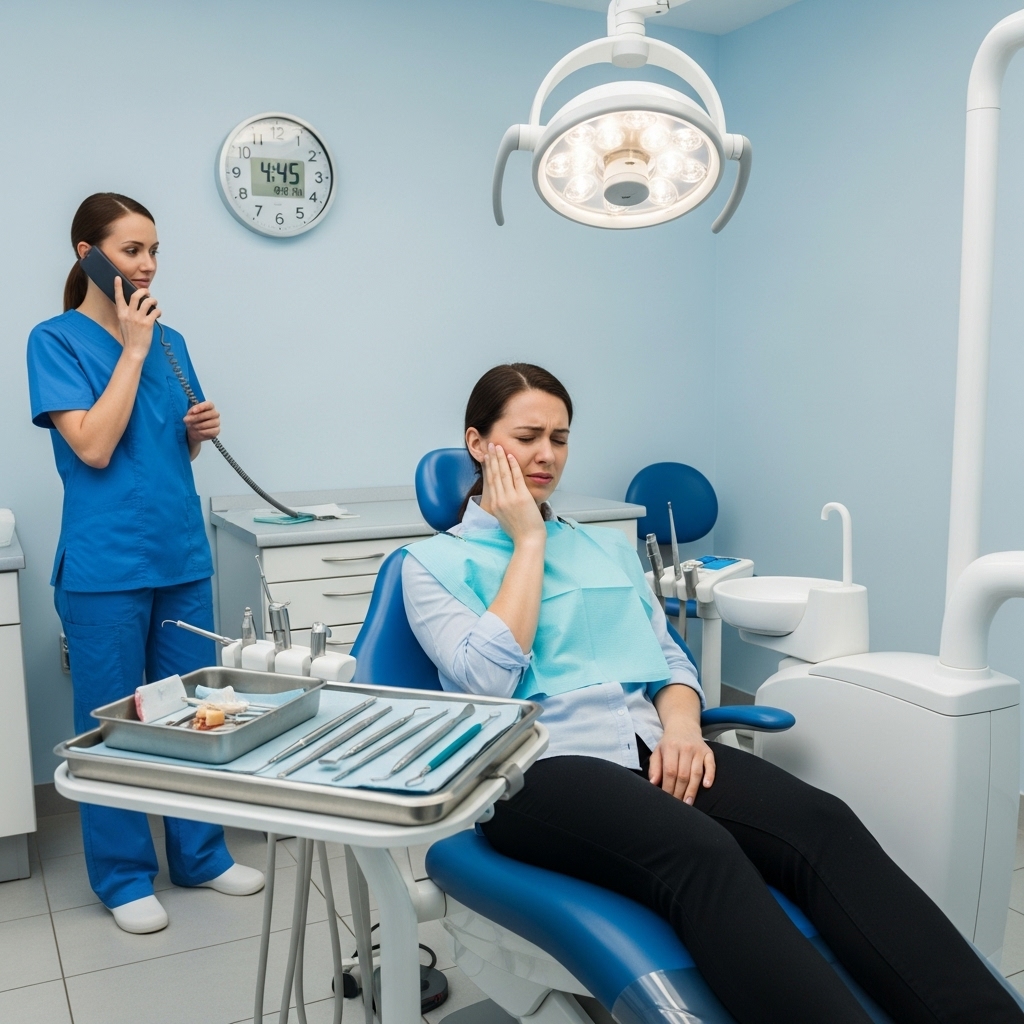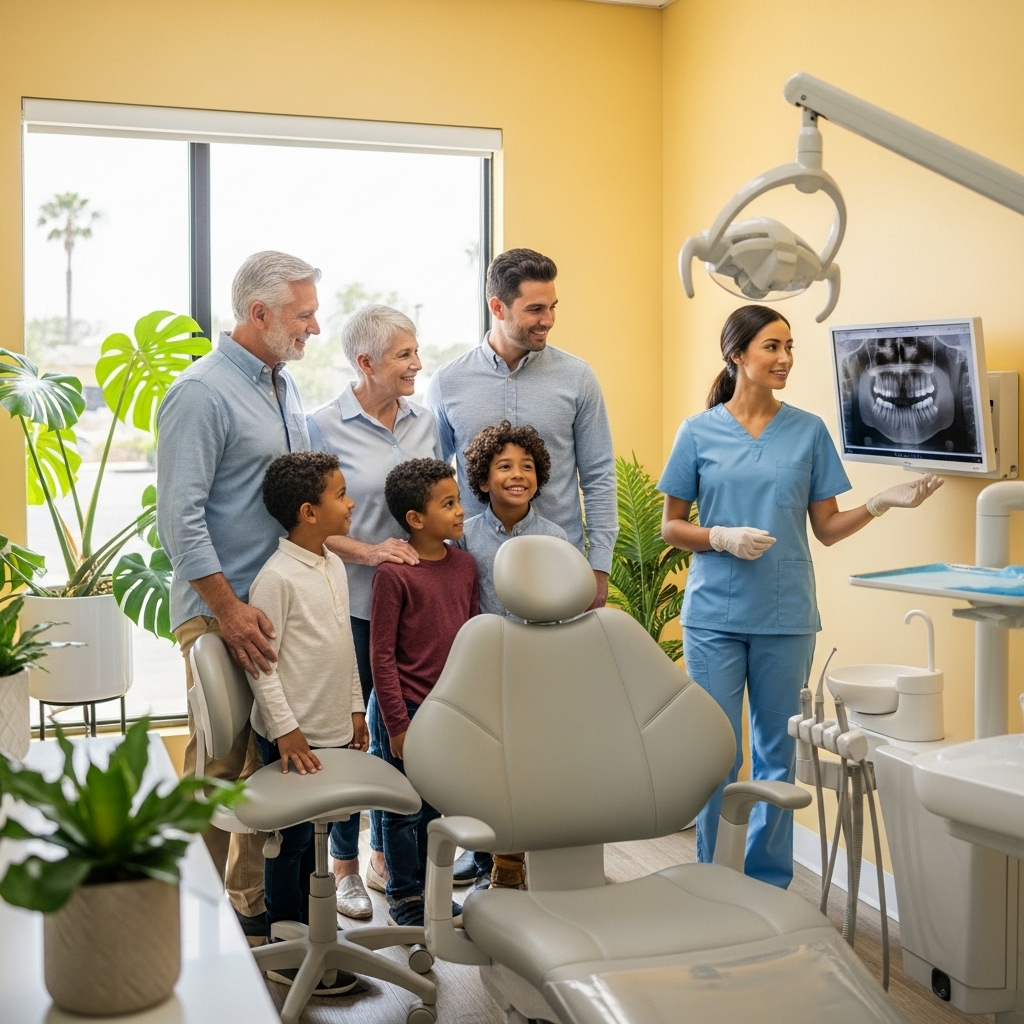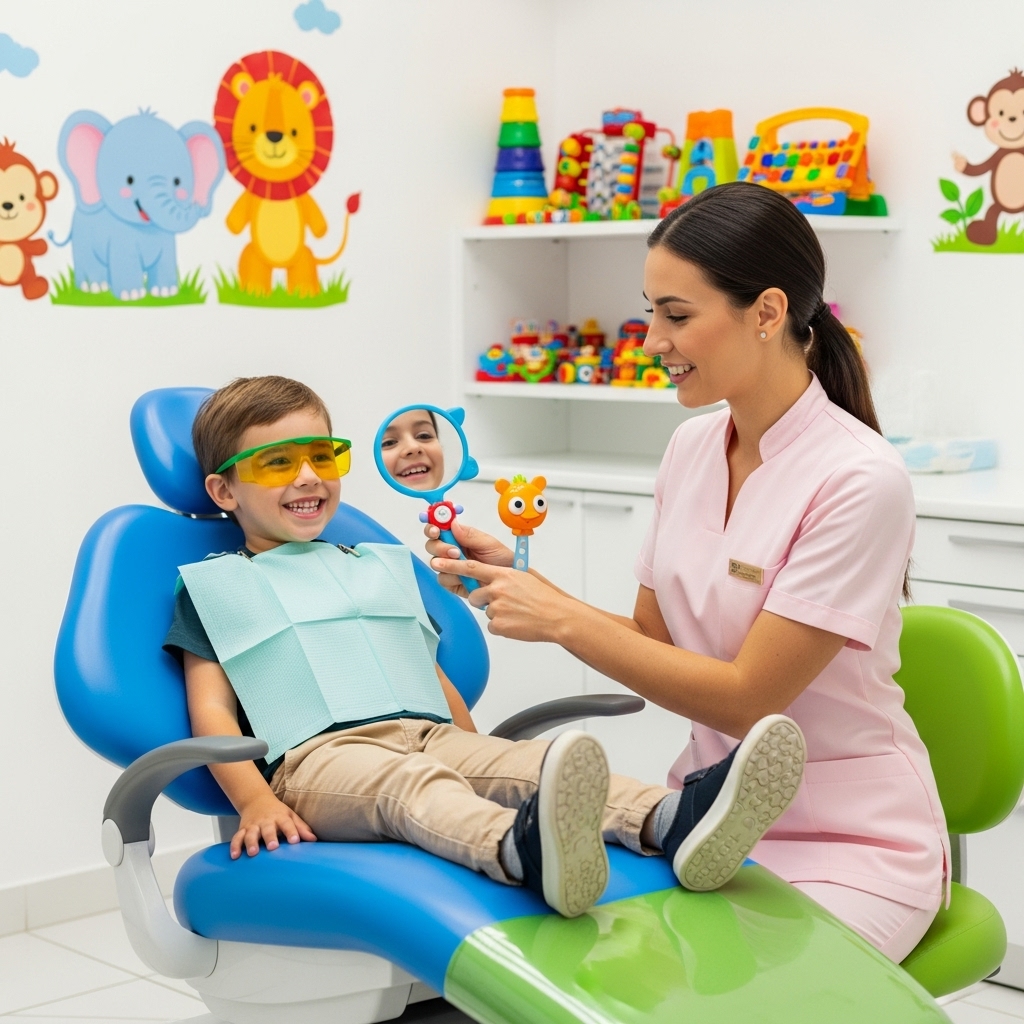Dental emergencies never consult your calendar, and when they strike in Woodland Hills, speed and clarity matter. Whether you chipped a tooth during a weekend pickup game at Serrania Park, woke up with throbbing pain that won’t fade, or noticed sudden swelling after a bite of something unexpectedly hard, you need calm, expert guidance and a place to turn now. In a community where schedules run tight and traffic along the 101 can slow everything down, knowing exactly whom to call and what to do in the first few minutes can protect your smile and your peace of mind. If you are searching right now for help, start by contacting a trusted emergency dentist in Woodland Hills who can triage your symptoms, prioritize your comfort, and offer a clear path forward.
In this guide, I’ll walk you through the steps to take for the most common urgent dental issues, what to expect when you arrive at the office, and how to minimize the chances of a repeat emergency. You’ll learn simple, effective measures you can take at home to protect a tooth until you’re seen, and you’ll get an insider’s view of how local practices accommodate same-day needs while keeping care efficient and compassionate. Emergencies are stressful, but the process of getting help doesn’t have to be.
First Steps: Stay Calm and Call
The first minutes after a dental emergency are valuable. If a tooth is chipped, cracked, knocked loose, or painful, call the dentist right away and describe your symptoms clearly. A good office will ask focused questions—when the pain started, whether it throbs or zings, what triggered it, and if you notice sensitivity to temperature or pressure. These details help determine urgency and the best immediate advice. If an appointment is necessary, you’ll be offered a time as soon as possible, and you’ll leave the call knowing exactly how to protect the area until then.
While you wait, a few rules of thumb keep you safer. Rinse gently with lukewarm water to clear debris. Use a cold compress on the cheek for swelling. Avoid chewing on the affected side. If a piece of tooth breaks off, save it in a clean container. If a temporary crown dislodges, keep it safe and bring it with you. Avoid very hot or very cold food and drinks until you see your dentist, because rapid temperature shifts can intensify pain.
Understanding Pain: What Your Symptoms May Mean
Not all pain points to the same problem. A sharp, momentary twinge when you bite down often suggests a crack or a high spot on a filling. Throbbing pain that keeps you awake at night may signal inflammation or infection deeper in the tooth or gums. Sensitivity to cold can be tied to gum recession or recent whitening, while sensitivity to heat more often hints at an issue inside the tooth. Your dentist’s job is to interpret these clues with an exam and imaging so treatment addresses the root cause, not just the symptom.
In Woodland Hills, where many of us juggle intense workweeks and active weekends, it’s easy to delay care and push through minor discomfort. But pain that changes, intensifies, or lingers deserves attention. Early intervention can prevent a small crack from turning into a larger fracture or a minor gum issue from progressing. Think of an urgent visit as an investment in keeping treatment simple.
Cracked, Chipped, or Broken Teeth
Cracks and chips happen in a flash—an awkward bite into a seeded baguette, a tumble on a trail, or a stray elbow on the basketball court. If you can, save any fragments in a clean container. Rinse your mouth gently and avoid chewing on that side. Your dentist will evaluate the extent and location of the damage and recommend the most conservative approach that restores strength and comfort. Sometimes smoothing a sharp edge is enough; other times, a more protective solution is needed to keep the tooth stable and pain-free.
If pain increases when you release a bite, that could indicate a specific type of crack. Describing this detail on the phone helps your dentist prepare for the visit. The goal is to stabilize the tooth as quickly as possible and prevent the crack from extending. Acting early often means fewer appointments and more predictable results.
Knocked-Out or Loosened Teeth
A knocked-out tooth is time-sensitive. Hold the tooth by the crown, not the root, and gently rinse if dirty. If you can, place it back in the socket and bite softly on a clean gauze or cloth. If reinsertion isn’t possible, place the tooth in milk or a tooth-preservation solution and head to the dentist immediately. Quick action maximizes the chance of saving the tooth. For loose teeth, avoid wiggling them with your tongue and stick to soft foods until you are seen; your dentist will assess stability and discuss the best next steps.
Parents often encounter these scenarios during playground mishaps or sports. Having a plan in mind—knowing whom to call and what to do with a dislodged tooth—reduces panic. Many local practices in Woodland Hills build room in their schedule for exactly these cases so you can be seen promptly.
Swelling, Infection, and Abscess Concerns
Facial swelling, gum tenderness, or a pimple-like bump on the gums can signal infection. These symptoms deserve immediate attention, especially if you notice fever or difficulty swallowing. Your dentist will examine the area, take imaging if needed, and decide on the most effective way to relieve pressure and treat the source. The aim is to resolve pain, preserve your natural tooth when possible, and support healing so you can get back to daily life quickly.
While you wait for your appointment, avoid heat on the face; opt for a cool compress instead. Do not attempt to drain anything at home. Keep your head elevated when resting to minimize throbbing. Prompt professional care is the safest and most reliable path to relief.
When a Filling, Crown, or Veneer Feels “Off”
If a crown or veneer comes loose or a filling chips, don’t ignore it. Rinse gently and avoid chewing on the tooth. Save any pieces and bring them with you. Even a slightly “high” bite can irritate a tooth and surrounding tissues if left unaddressed. Your dentist can adjust the bite, replace the restoration, or recommend a protective solution to prevent further damage. Acting quickly typically means a simpler fix.
It’s common for patients to delay these visits because discomfort seems manageable. The risk is that a small issue may grow. A stable, comfortable bite protects teeth, restorations, and jaw muscles, so timely attention pays dividends.
What to Expect During an Emergency Visit
Your first interaction is often a triage conversation by phone, followed by an in-office exam. You’ll describe what happened and how the area feels, and the team will gather focused images to guide decisions. The priority is to relieve pain and stabilize the situation. From there, your dentist will outline options, explain the benefits of each, and help you decide on next steps that align with your goals. You’ll leave with immediate relief and a plan that feels manageable and clear.
Great practices also follow up. A simple check-in to see how you’re feeling, answer new questions, or adjust instructions adds a layer of confidence that makes a stressful experience feel well cared for from start to finish.
Prevention: Making Emergencies Less Likely
While no one can prevent every mishap, a few habits reduce the odds. Keep up with twice-yearly checkups to catch small cracks or wear before they escalate. If you grind at night, a properly fitted nightguard protects enamel and restorations. For athletes, a sports mouthguard is essential; having one in the gym bag means it actually gets used. Around the house, avoid opening packages with your teeth and go slow with very hard foods. These may sound like small things, but they are proven, practical ways to keep your smile out of trouble.
In Woodland Hills, life moves quickly. Building these habits into your routine means you can focus on work, family, and the fun parts of Valley life without dental surprises stealing the spotlight.
Mid-City Realities: Traffic, Timing, and Access
Getting to the dentist quickly can feel daunting when the 101 is backed up or school pick-up is looming. That’s why local offices work hard to offer flexible scheduling and clear directions for arriving safely and efficiently. If you’re calling from the road, pull over, take a breath, and let the team guide you. They may suggest the best window to avoid traffic surges or the quickest route from Warner Center or Calabasas. A few practical tips can shave precious minutes off your arrival time.
Once you’re in the chair, you’ll find that a calm, methodical approach is the antidote to stress. Focused questions, precise imaging, and a stepwise plan transform chaos into clarity. And that’s when relief begins—when you understand what’s happening and trust the path forward.
Frequently Asked Questions
What qualifies as a dental emergency?
Sudden, severe pain; facial swelling; a tooth that’s knocked out or significantly loosened; uncontrolled bleeding; and injuries that expose the inner part of a tooth all count as emergencies. A lost filling or crown may not be urgent every time, but if it causes pain or exposes sharp edges, call right away. When in doubt, err on the side of contacting your dentist. A brief conversation can determine the urgency and give you steps to stay comfortable until you’re seen.
Can I wait a few days to see if the pain improves?
If pain is moderate to severe, wakes you at night, or changes rapidly, do not wait. Dental conditions can evolve quickly, and early care is almost always simpler and more comfortable. If discomfort is mild and seems linked to a known trigger—like recent dental work—call for guidance. Your dentist will help you decide the best timing and may suggest short-term measures to protect the area.
What should I do if my child knocks out a tooth?
For a permanent tooth, time is critical. Handle the tooth by the crown, gently rinse if dirty, and try to place it back in the socket. If you can’t, store it in milk and head to the dentist immediately. For a baby tooth, do not reinsert it; call your dentist for instructions. Keeping calm, acting quickly, and contacting the office gives your child the best chance for a positive outcome.
Is swelling always a sign of infection?
Swelling often indicates inflammation and can signal infection that needs immediate attention. If swelling is accompanied by fever, difficulty breathing, or trouble swallowing, seek urgent care right away. For localized swelling without severe symptoms, call your dentist promptly for an evaluation. Your dentist will determine the cause and guide you to safe, effective relief.
What if my crown or veneer falls off?
Save the restoration, keep the area clean, and avoid chewing on the tooth. Call the dentist to arrange a prompt evaluation. Do not use household glues. A professional assessment ensures a secure reattachment or an appropriate replacement and addresses any underlying issues that led to the problem.
How can I prevent future emergencies?
Routine checkups, a custom nightguard if you grind, and a sports mouthguard if you’re active are key. Be mindful when eating very hard foods and avoid using your teeth as tools. If you notice small changes—occasional zings, a new rough edge—mention them right away. Early attention keeps issues small and manageable.
Will I be able to return to work or school the same day?
In many cases, yes. After urgent care, most patients can resume everyday activities, though you may receive instructions to take it easy or avoid certain foods for a short time. If a more involved procedure is needed, your dentist will explain recovery expectations clearly so you can plan accordingly.
How do local practices accommodate emergencies?
Many Woodland Hills offices build same-day time blocks into the schedule for urgent needs. When you call, they triage symptoms, offer the first available appointment, and provide precise guidance for the interim. The emphasis is on fast pain relief, stabilization, and clear follow-up so you can move forward with confidence.
Take Action Now for Reliable Relief
If you’re dealing with pain, swelling, or a sudden dental mishap, help is closer than you think. Reach out to a trusted Woodland Hills emergency dentist who can provide swift guidance, compassionate care, and a clear plan to protect your smile. Getting help now can make all the difference in how you feel today—and how simple your next steps will be.





